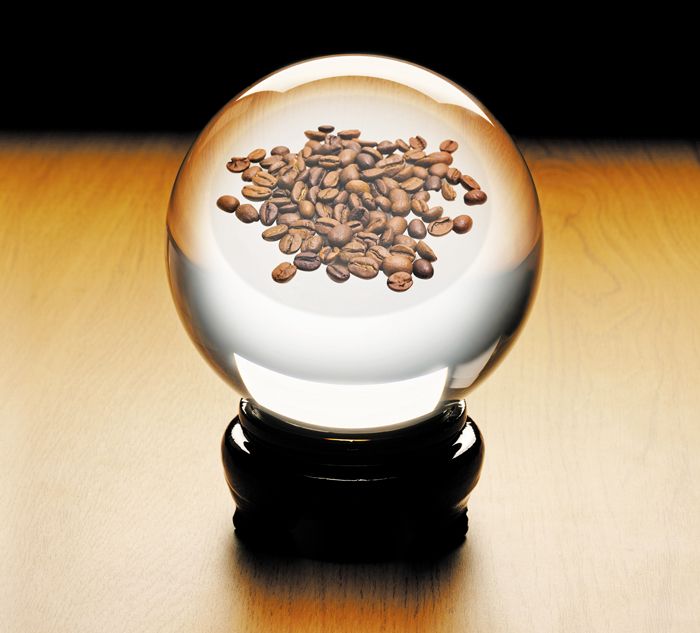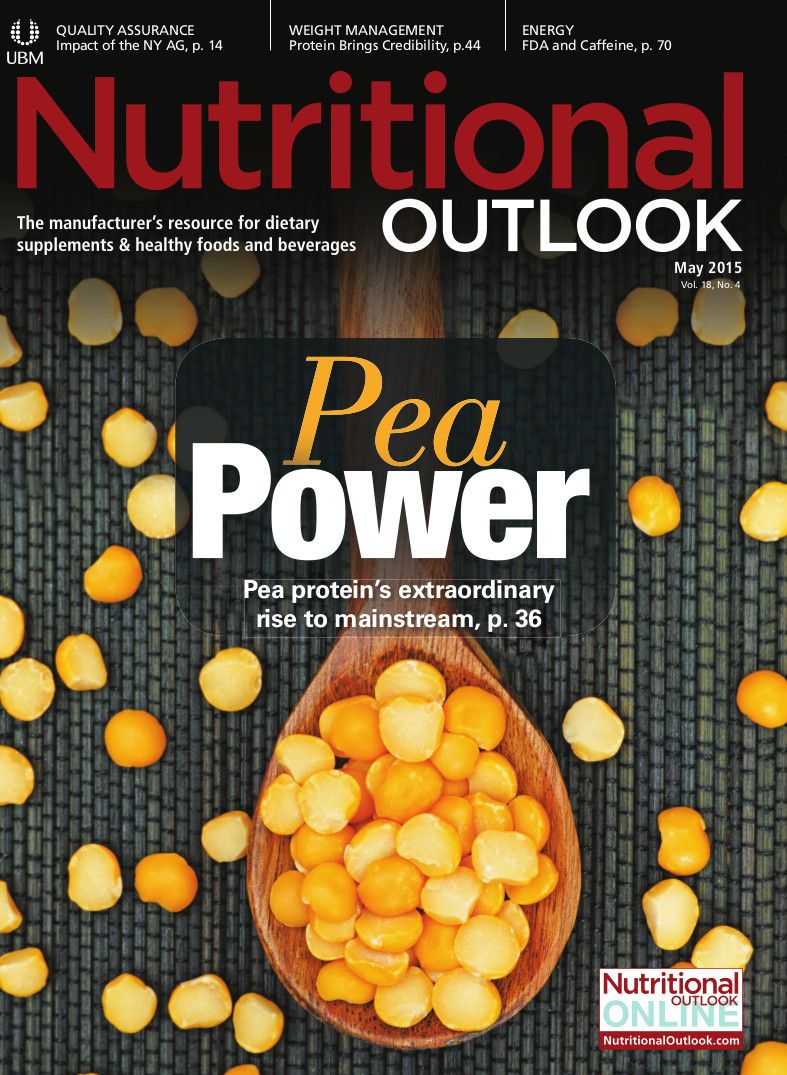What Actions Could FDA Possibly Take on Caffeine This Year?
The first months of 2015 have already offered the agency several possible opportunities to comment or take regulatory action on caffeine.

It's difficult to think of any word to describe the U.S. caffeine industry besides “booming.” As of 2014, U.S. coffee market retail sales were around $12.8 billion, with skyrocketing energy drink sales close behind at $9.8 billion, according to Ashley Sellers, communications executive, Euromonitor International. Even regulatory scrutiny around energy drinks and alcohol/caffeine combinations hasn’t slackened America’s thirst for caffeine.
Although FDA has been relatively silent on the topic of caffeine recently compared to years past, the first months of 2015 have already offered the agency several possible opportunities to comment or take regulatory action on caffeine. Whether it’s powdered caffeine, safe usage thresholds, or caffeine products aimed at children, here are a few of the possible targets for FDA action this year.
Safe-Limit Guidelines
In April, the European Food Safety Authority (EFSA; Parma, Italy) adopted its safety assessment of caffeine, including the opinion that 400 mg of caffeine per day is a safe threshold for adults. This 400 mg recommendation is in line with FDA’s stance, says Bill Frankos, PhD, former FDA director, division of dietary supplement programs, and currently the senior vice president for global product science, safety, and compliance at Herbalife International.
In the past, FDA has cited 400 mg of caffeine per day as “an amount not generally associated with dangerous, negative effects” for healthy adults, but the agency has not released anything as official or broad as EFSA’s safety assessment of caffeine. However, Frankos points to a 2013 caffeine report1 supported by the International Life Sciences Institute (ILSI) as a likely indicator of FDA’s thinking on the issue.
The ILSI report suggests, fortunately, that most Americans consume caffeine within that safe range-a finding that Frankos thinks FDA may look to as evidence of why further broad action on caffeine is unnecessary. Based on the caffeine habits of 37,602 Americans surveyed, the report found that the 90th percentile of caffeine intake for all ages was 380 mg/day, or within the recommended threshold.
“It did not indicate there was a health hazard from the current consumption of caffeine,” says Frankos, who also calls the report “the most up-to-date estimate of caffeine intake in the United States.” Based on this apparent lack of a widespread health hazard, Frankos says “it’s unlikely FDA’s going to limit use of any specific beverage type.”
However, there are certain products FDA may still have reason to limit.
“There are some beverages that [the report] identified where a single use of that beverage exceeded 400 mg [of caffeine],” says Frankos. “Those were primarily what are called shots, small shots, where you could get as much as 480 mg, up to 550 mg, in one shot. Something like that, that very specific type of product, I could see that they could say that you cannot sell a product like that when it has such a high level of caffeine, since its single use would be above the 400 [mg threshold].”
Even in drinks with a single serving below the safe threshold, large cans may contain multiple servings of caffeine that total more than 400 mg. Frankos sees these products as another possible target of FDA action. For instance, the agency might say that such beverages have to come in a resealable container so consumers won’t be as likely to drink all that caffeine at once.
FDA guidance or proposals have already indicated the agency’s thinking in this area. In February 2014, FDA proposed to update the Nutrition Facts label to better reflect contemporary serving and packaging sizes. Under the change, a beverage that is likely to be consumed entirely in one sitting would feature nutrition information for the entire bottle’s contents regardless of whether it contains 12 oz or 20 oz. Additionally, in January 2014, FDA issued final guidance on how it distinguishes liquid dietary supplements from conventional beverages. The product name, packaging, graphic representations, recommended daily intake, and composition were a few of the criteria FDA said it would consider in determining whether a product is a supplement or a beverage.
Powdered Caffeine
Perhaps the greatest pressure FDA currently faces is around the availability of powdered caffeine direct to consumers. In January, six U.S. senators wrote to FDA and urged the agency to immediately ban direct-to-consumer marketing and retail sale of pure caffeine. The Council for Responsible Nutrition (CRN; Washington, DC), the American Herbal Products Association (AHPA; Silver Spring, MD), and the United Natural Products Alliance (UNPA; Salt Lake City, UT) have also spoken out against selling powdered caffeine to consumers and strongly discouraged their member companies from doing so.
“Consumers have no reason to purchase pure caffeine and would be unable to properly measure it into doses containing safe levels of caffeine,” said Steve Mister, president and CEO, CRN, in a press release dated January 27. “Direct-to-consumer sales of pure caffeine present an unreasonable risk to public health.”
A single teaspoon of pure caffeine contains roughly the same amount of caffeine as 25 cups of coffee, according to FDA. In 2014, two young men died after ingesting too much powdered caffeine, which has been a major factor behind the outcry.
Unlike a run-of-the-mill grocery store coffee product, “when you have a product that has labeling and dosage that could be really confusing and almost impossible for a consumer to discern, that obviously raises some issues,” says Rend Al-Mondhiry, CRN’s regulatory counsel. She adds that powdered caffeine sales to supplement manufacturers are not currently a subject of concern because manufacturers have a better understanding of how to properly handle powdered caffeine.
Last December, FDA did warn against the sale of powdered pure caffeine direct to consumers, but the sales still continue. By and large, Al-Mondhiry does not anticipate any major FDA movement on caffeine this year, but she does view powdered caffeine as one of the most likely targets of potential action.
“I know that they [FDA] are really concerned about the availability of that specific type of product to consumers,” said Al-Mondhiry.
Caffeinated Kids
Another aspect of caffeine FDA has yet to fully address is what a safe level of ingestion might be for young children. EFSA’s opinion admits there is insufficient information to set a safe intake level for children, but it also suggests that the safe intake level for adults (3 mg per kg of body weight per day) may “serve as a basis” for safe caffeine levels for children. FDA has not yet issued any similar opinion.
“This is what I would expect FDA will be trying to determine, which is what is a safe level of [caffeine] ingestion for a young child, and especially because there seems to be a proliferation of these products that would be consumed as foods by children, such as putting caffeine in a cereal or in a waffle or in a pancake,” says Frankos.
Yet, even if FDA finds that food products marketed to children are leading to adverse health reactions, it could still be difficult for the agency to restrict common foods containing caffeine when a company can’t control how much of its product a child might consume, says Frankos.
“The only other thing [FDA] could do is possibly say that you cannot add caffeine to children’s cereals, let’s say, because they’re targeted to children and we don’t have enough evidence to determine what is a safe level of caffeine for children,” says Frankos. “That is something they could do, but it would have to be very specific to something that’s used only by children.”
Whether or not FDA actually does act on caffeine this year, keep an eye out for these elements of the caffeine discussion to continue making headlines in 2015 and beyond.
Also read:
How Does EFSA’s Caffeine Assessment Match Up with Other Global Standards?
Should We Label Caffeine Content in Energy Drinks?
Energy Drinks: Consumers Seek Healthy Ingredients
References
- Mitchell DC et al., “Beverage caffeine intakes in the U.S.” Food and Chemical Toxicology, vol. 63 (January 2014): 136-142
Photo © iStockphoto.com/wragg. Photo © iStockphoto.com/toto8888























